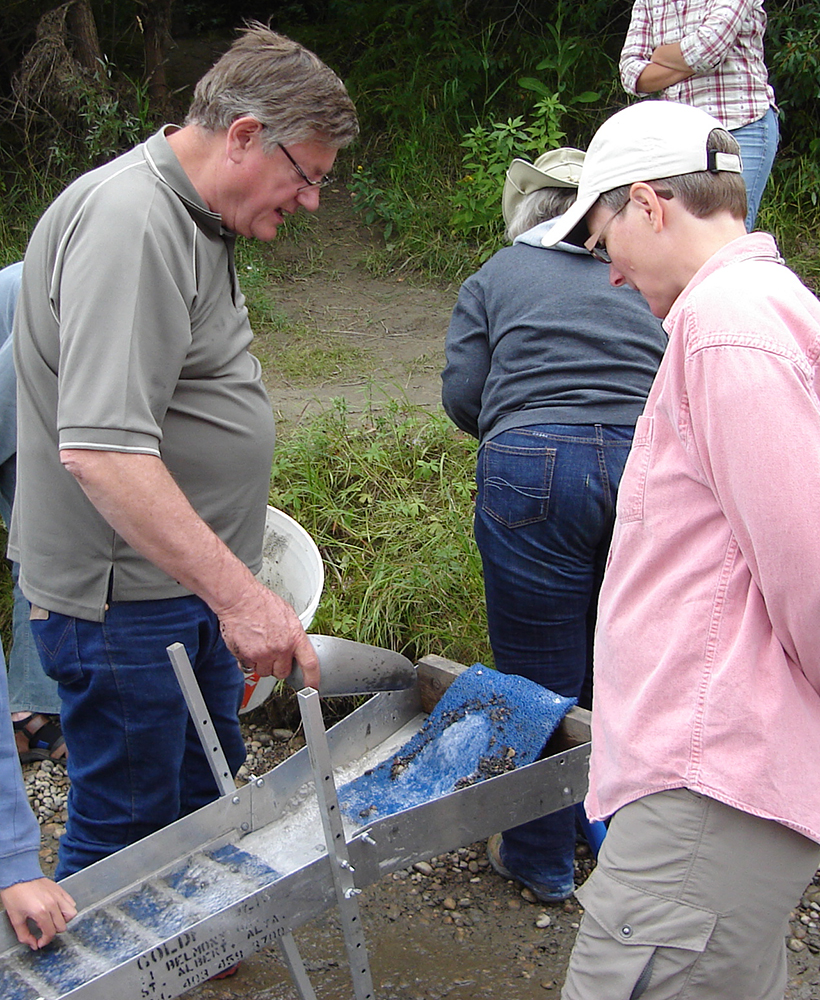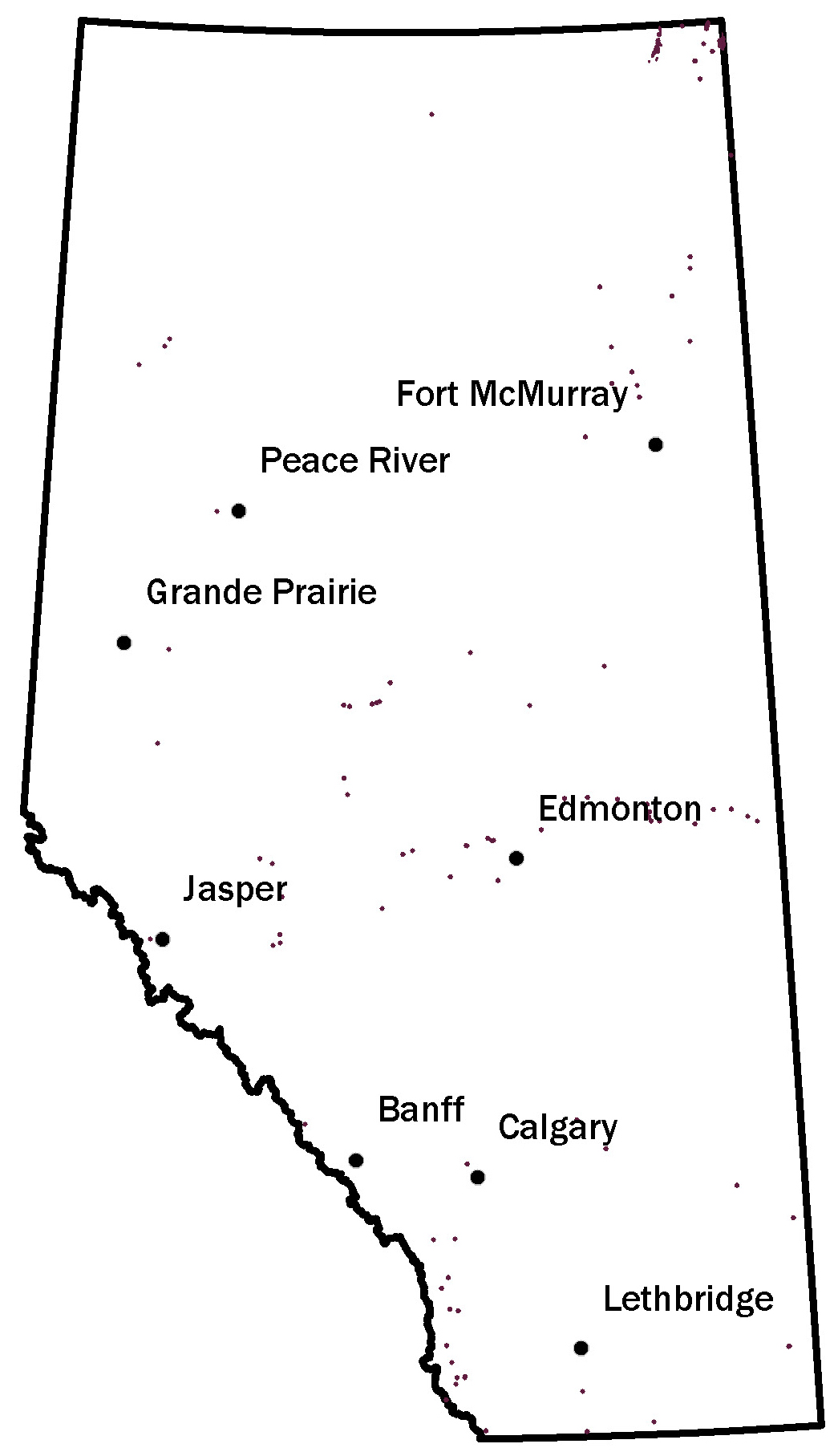![]()

Flakes of gold and other minerals commonly found with gold including black magnetite, pink garnet, and translucent quartz. Collected from the North Saskatchewan River Valley, Edmonton, Alberta. The largest flake is 0.7 mm long.

Using a sluice to separate gold from sand and gravel
Composition
Gold is a metallic element that may be found alone, or as an alloy with other elements.
Age and Formation
In Alberta, most gold is found as tiny flakes, called placer gold, found in modern and ancient river and glacial deposits. It is difficult to determine the source of the gold because the flakes are weathered out from the original host rock and have travelled far from it. The gold may have come from rocks in the Rocky Mountains, younger rocks of the Plains, or ancient rocks of the Canadian Shield. Lode gold, meaning gold within its original host rock, is found in igneous and metamorphic rocks in the northeastern part of Alberta; these rocks are 105 million to 1500 million years old.
Important properties
Gold is soft, malleable, ductile, a good conductor, resistant to corrosion, and chemically inactive. It is rare, which increases its economic value.
Uses
Gold is in electronics, jewelry, dental appliances, anti inflammatory medicines, and optical instruments. Gold has been used for making coins for at least 2700 years. For over 5000 years it has been applied to objects to improve their appearance and value. Modern currencies are commonly secured with gold bars. Gold is produced in Alberta as a byproduct of sand and gravel processing, and by those who pan for it along rivers.
It’s a Fact!
Some gold flakes found in Alberta show evidence of being modified, or produced, by bacteria. Certain bacteria, with an unusual metabolism, process gold-bearing soil, sediment, or rock, and excrete the gold as a waste product.
Discover!
Where to find gold
